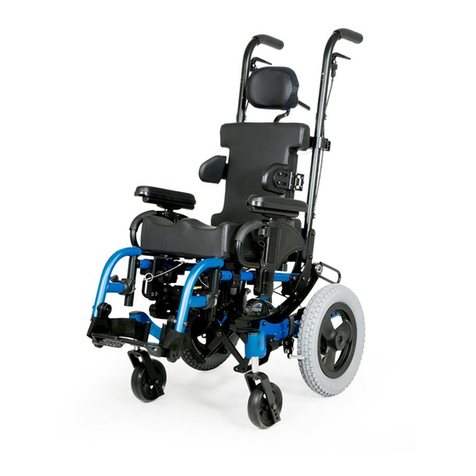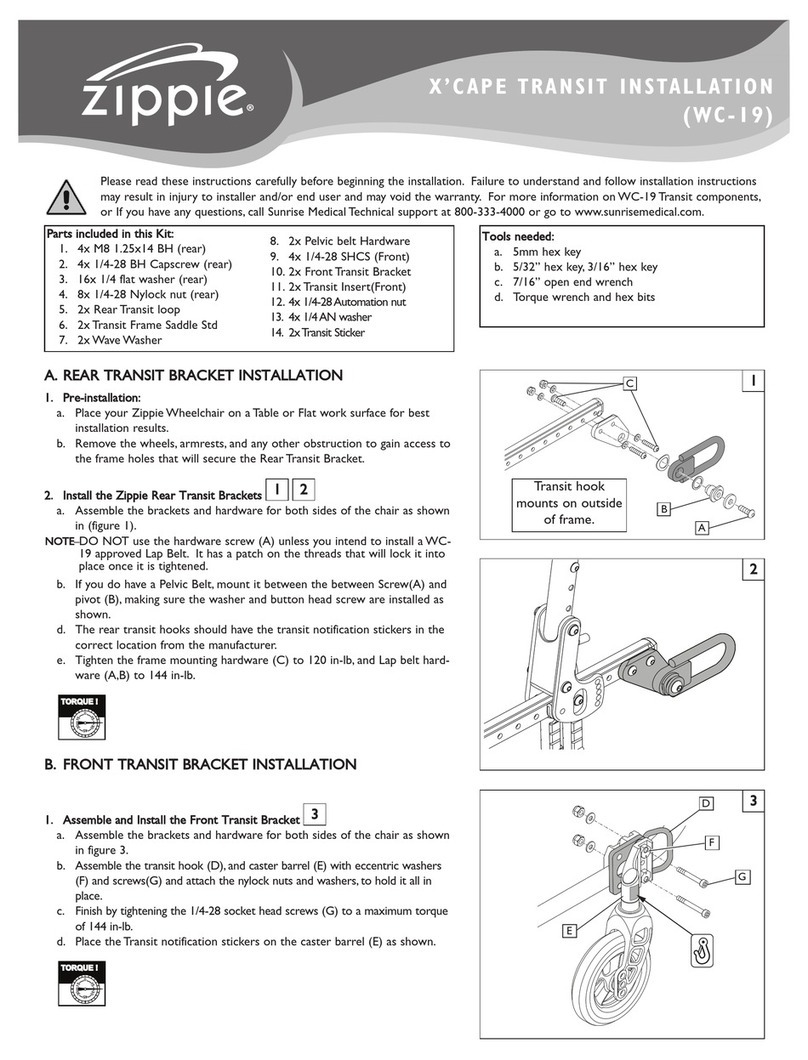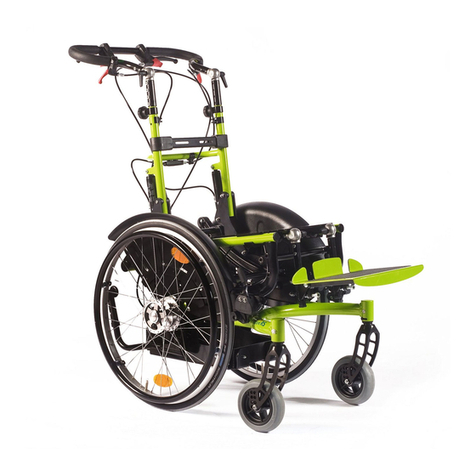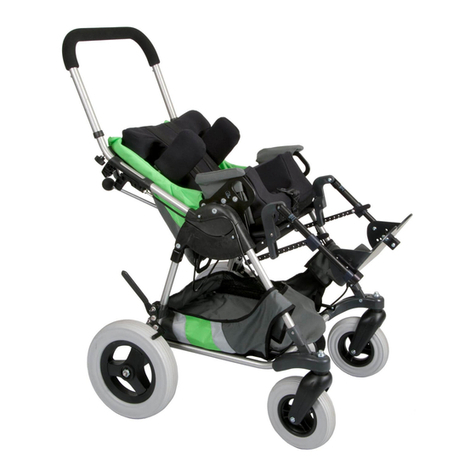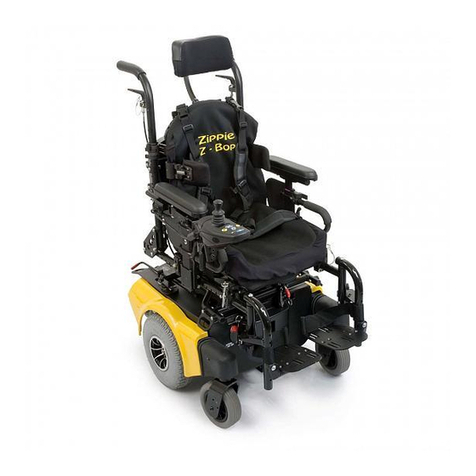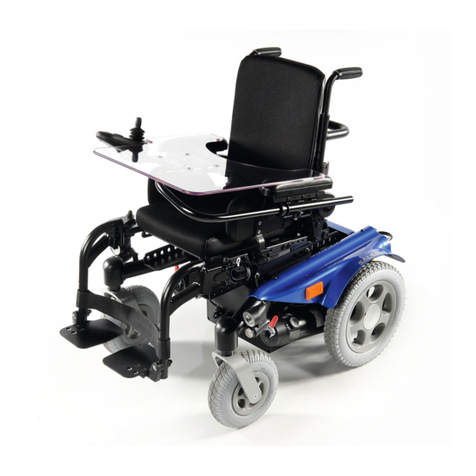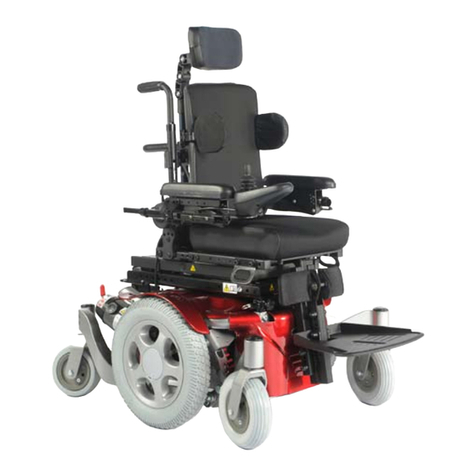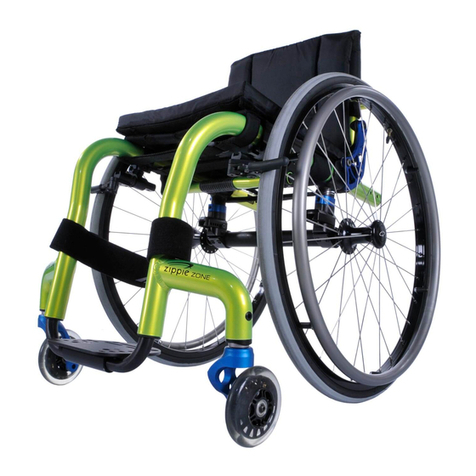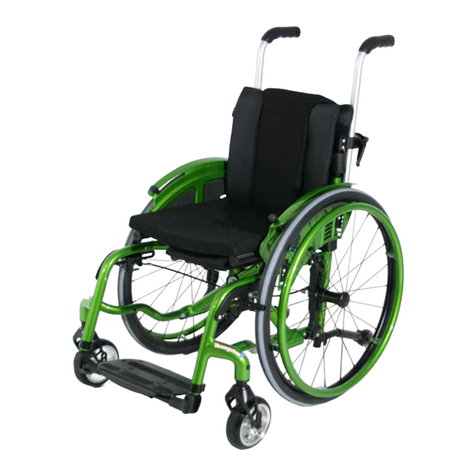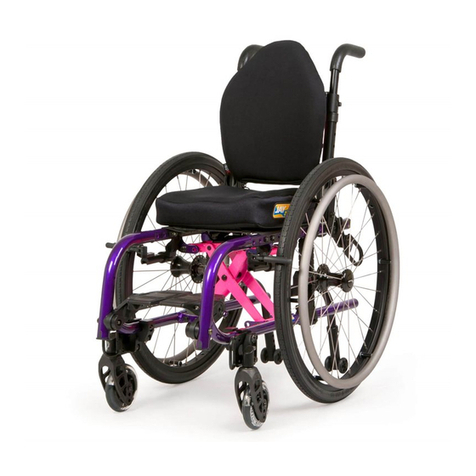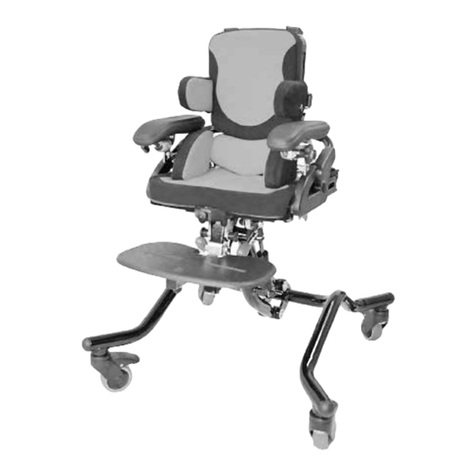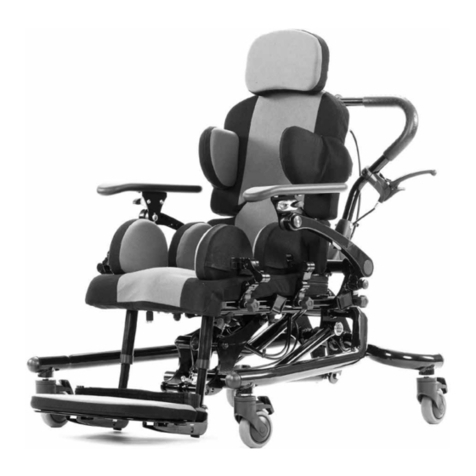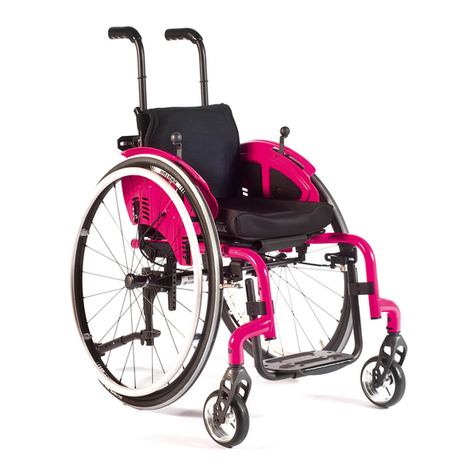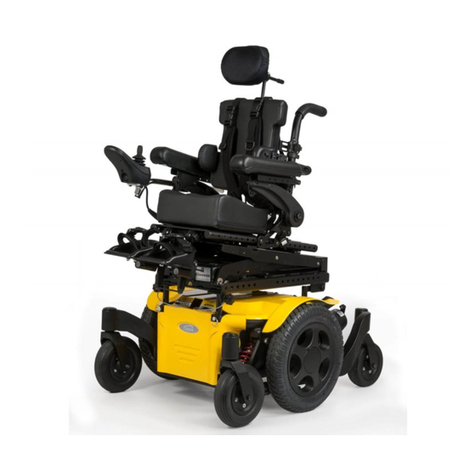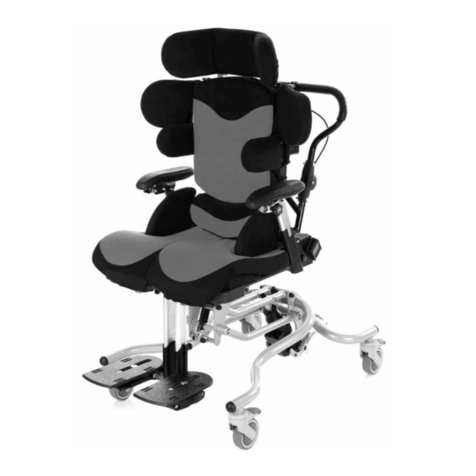
D. OBSTACLES
WARNING
Obstacles and road hazards (such as potholes and broken pavement)
can damage your chair and may cause a fall, tip-over or loss of control.
To avoid these risks:
1. Keep a lookout for danger – scan the area well ahead of your
chair as you ride.
2. Make sure the floor areas where you live and work are level
and free of obstacles.
3. Remove or cover threshold strips between rooms.
4. Install a ramp at entry or exit doors. Make sure there is not a
drop off at the bottom of the ramp.
5. To elp Correct Your Center Of Balance:
a. Lean your upper body FORWARD slightly as you go UP
over an obstacle.
b. Press your upper body BACKWARD as you go DOWN
from a higher to a lower level.
6. If your chair has anti-tip tubes, lock them in place before you
go UP over an obstacle.
7. Keep both of your hands on the handrims as you go over an
obstacle.
8. Never push or pull on an object (such as furniture or a door-
jamb) to propel your chair.
If you fail to heed these warnings damage to your chair, a fall, tip-over or loss of
control may occur and cause severe injury to the rider or others.
E. REACHING OR LEANING
WARNING
If you reach or lean it will affect the center of balance of your chair.
This may cause you to fall or tip over. When in doubt, ask for help or
use a device to extend your reach.
1. NEVER reach or lean if you must shift your weight sideways or
rise up off the seat.
2. NEVER reach or lean if you must move forward in your seat to
do so. Always keep your buttocks in contact with the backrest.
3. NEVER reach with both hands (you may not be able to catch
yourself to prevent a fall if the chair tips).
4. NEVER reach or lean to the rear unless your chair has anti-tip
tubes locked in place.
5. DO NOT reach or lean over the top of the seat back. This
may damage one or both backrest tubes and cause you to fall.
6. If You Must Reach Or Lean:
a. Do not lock the rear wheels. This creates a tip point and
makes a fall or tip-over more likely.
b. Do not put pressure on the footrests.
NOTE– Leaning forward puts pressure on the footrests and
may cause the chair to tip if you lean too far.
c. Move your chair as close as you can to the object you
wish to reach.
d. Do not try to pick up an object from the floor by reach-
ing down between your knees. You are less likely to tip if
you reach to the side of your chair.
e. Rotate the front casters until they are as far forward as
possible. This makes the chair more stable.
NOTE– To do this: Move your chair past the object you
want to reach, then back up alongside it. Backing up
will rotate the casters forward.
f.Firmly grasp a rear wheel or an armrest with one hand. This
will help to prevent a fall if the chair tips.
If you fail to heed these warnings damage to your chair, a fall, tip-over or loss of
control may occur and cause severe injury to the rider or others.
VI. WARNINGS: FALLS & TIP-OVERS
A. CENTER OF BALANCE
WARNING
The point where this chair will tip forward, back, or to the side
depends on its center of balance and stability. ow your chair is set
up, the options you select and the changes you make may affect
the risk of a fall or tip-over.
1. The most important adjustment is the position of the rear
wheels. The more you move the rear wheels forward, the
more likely your chair will tip over backward.
2. The center of balance is also affected by:
a. A change in the set-up of your chair, including:
• The distance between the rear wheels.
• The amount of rear wheel camber.
• The seat height and seat angle.
• Backrest angle.
b. A change in your body position, posture or weight
distribution.
c. Riding your chair on a ramp or slope.
d. The use of a back pack or other options, and the amount
of added weight.
3. To reduce the risk of an accident:
a. Consult your doctor, nurse or therapist to find out what
axle and caster position is best for you.
b. Consult your authorized supplier BEFORE you modify or
adjust this chair. Be aware that you may need to make
other changes to correct the center of balance.
c. ave someone help you until you know the balance
points of your chair and how to avoid a tip-over.
d. Use anti-tip tubes.
If you fail to heed these warnings damage to your chair, a fall, tip-over or loss of
control may occur and cause severe injury to the rider or others.
B. DRESSING OR CHANGING CLOTHES
WARNING
Your weight may shift if you dress or change clothes while seated in
this chair. To reduce the risk of a fall or tip-over:
1. Rotate the front casters until they are as far forward as possi-
ble. This makes the chair more stable.
2. Lock anti-tip tubes in place. (If your chair does not have anti-
tip tubes, back it up against a wall and lock both rear
wheels).
If you fail to heed these warnings damage to your chair, a fall, tip-over or loss of
control may occur and cause severe injury to the rider or others.
C. WHEELIES
WARNING
Doing a “wheelie” means: balancing on the rear wheels of your
chair, while the front casters are in the air. It is dangerous to do a
"wheelie" as a fall or tip-over may occur. owever, if you do it safe-
ly, a “wheelie” can help you overcome curbs and obstacles.
1. Consult your doctor, nurse or therapist to find out if you are
a good candidate to learn to do a “wheelie.”
2. Do not attempt a “wheelie” UNLESS you are a skilled rider
of this chair, or you have help.
NOTE– See Section VII-A for steps to learn to do a “wheelie.”
If you fail to heed these warnings damage to your chair, a fall, tip-over or loss of
control may occur and cause severe injury to the rider or others.
VI. WARNINGS: FALLS & TIP-OVERS
ENGLISH
7116100 Rev. B
